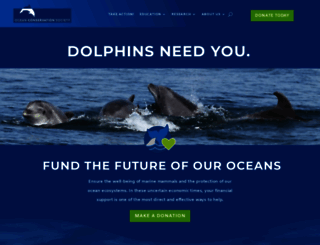Ocean Conservation Society: Help Protect Our Oceans Today
Page Load Speed
2 sec in total
First Response
113 ms
Resources Loaded
1.3 sec
Page Rendered
554 ms

About Website
Visit oceanconservation.org now to see the best up-to-date Ocean Conservation content for United States and also check out these interesting facts you probably never knew about oceanconservation.org
Learn about OCS’ 25 years of whale and dolphin research and educational programs that support and promote ocean conservation. Explore ways to get involved!
Visit oceanconservation.orgKey Findings
We analyzed Oceanconservation.org page load time and found that the first response time was 113 ms and then it took 1.9 sec to load all DOM resources and completely render a web page. This is quite a good result, as only 40% of websites can load faster.